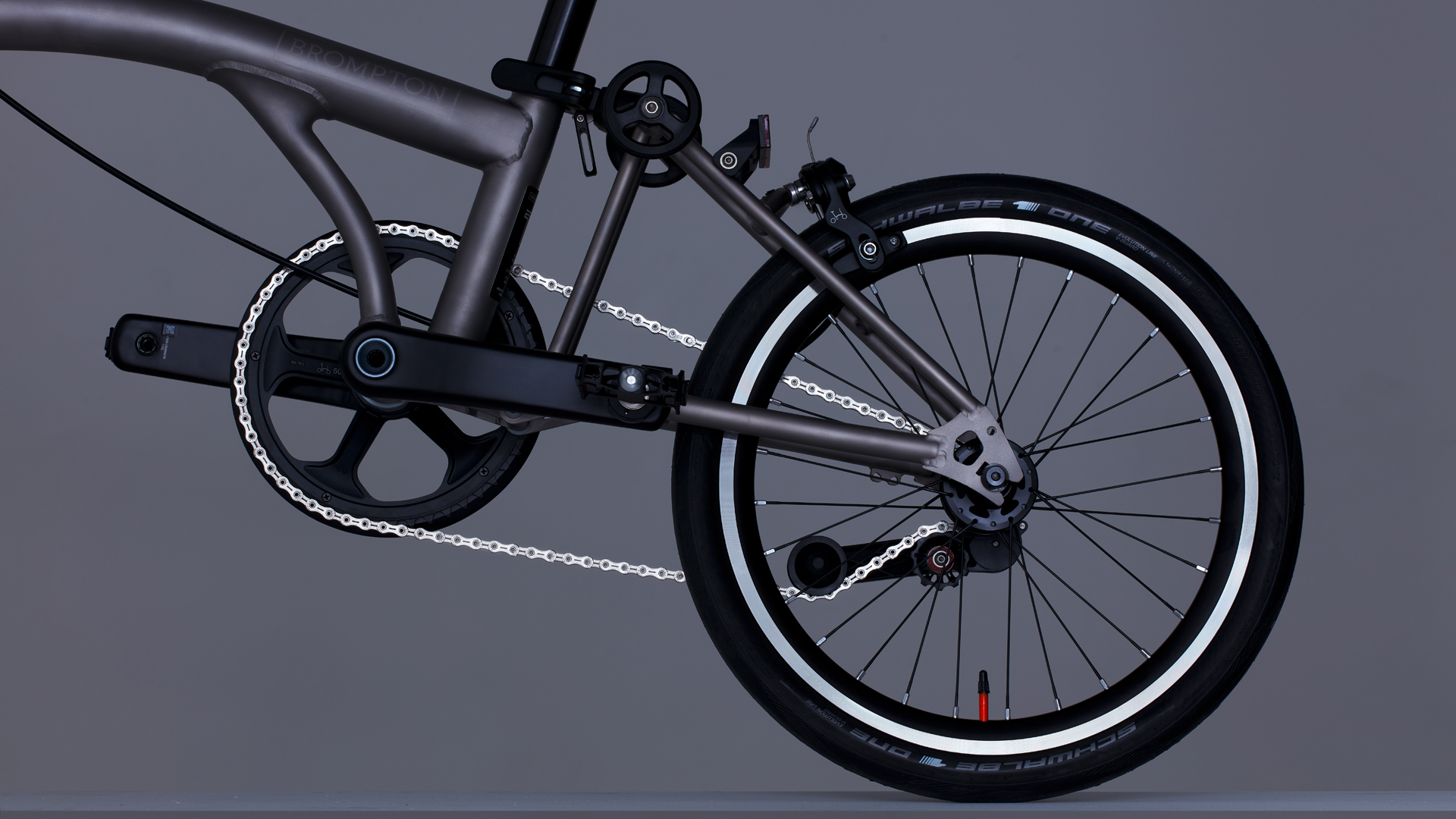
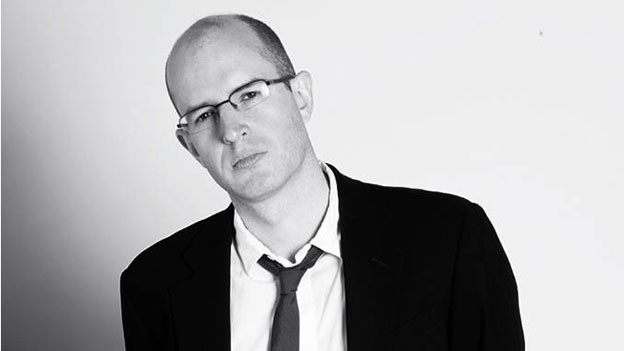
The Brompton T Line was unveiled yesterday (January 19 2022) and is by some distance the lightest version of the classic Brompton bike ever, beating out the previous incumbent by several kilos. You can read my thoughts about the Brompton T Line elsewhere, but here you have the chance to hear about it straight from the horse's mouth. Not that Will Carleysmith is a horse. No, he is Brompton's Chief Design and Engineering Officer.
Will kindly agreed to talk to me about how you go about redesigning a design classic, where Brompton might take its urban mobility dreams in future, and whether using a non-electric scooter can lead to having 'one big leg'.
Will Carleysmith (Chief Design and Engineering Officer at Brompton)
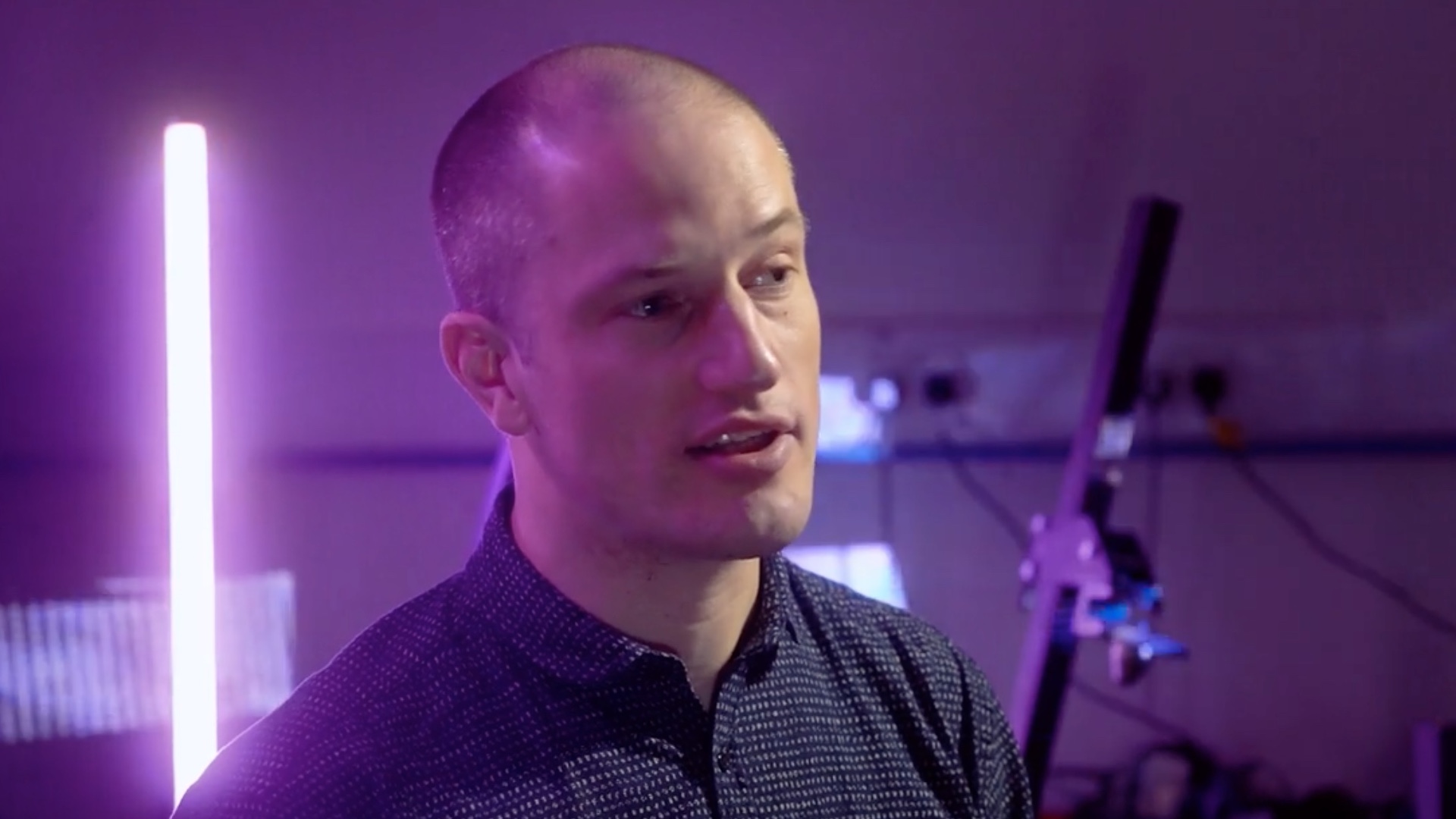
T3: What were the main design challenges around making the T Line?
Will Carleysmith: The challenge was really to get the weight as low as possible and not sacrifice durability, not sacrifice ride stiffness. Because titanium is phenomenal, super-tough material, but if you're not clever, you have to sacrifice frame stiffness and the ability to carry luggage and all that kind of stuff.
We really, really didn't want to do was create something fragile. We could have gone to carbon fibre. It's relatively straightforward; there are lots of people who make carbon fibre for us in our industry. But we didn't have the confidence in composites that it would stand up to 5, 10 years of beating the crap out of it, which is what we're about. We're about making tough products.
So we went with titanium but it had to be as tough as possible, maintain the stiffness and the ride and then get the weight as low as possible. So the target were fairly straight forward, but it's not too straight forward to achieve them.
We could have cut and pasted the old design, but it probably would have been about 30% less stiff to ride, and that would have been really noticeable and, you know, not that great, frankly.
Sign up to the T3 newsletter for smarter living straight to your inbox
Get all the latest news, reviews, deals and buying guides on gorgeous tech, home and active products from the T3 experts
So on this one, we used a lot more simulation tools for minute, finite element analysis – stuff that is now commonplace in F1, automotive, aerospace. Understanding 'what good looks like' was kind of challenge number one, so we worked through lots of ride-testing, building parts, putting those on rigs to measure them so we could understand where we were going in engineering terms.
We looked at a lot of technologies: 3D printing, CNC, machining, forging, casting. The real 'moment' came when we found a phenomenal titanium casting technology, that meant we could produce super fine, super accurate castings. That then gave us design freedom. It meant we could lean on the computers and all that simulation, and turn that theoretical engineering into a physical product.
Once we had that, it was a matter of going through the loops of analysis, simulation prototyping, testing.
Gearing was the other main challenge. Obviously, you can buy fantastic gear systems on the market that fit normal bikes, but we needed a system that allows you to fold the bike in every gear. What we didn't want was a bike where you had to put it in a certain gear in order to fold it. That involved less simulation and more 3D printing. If we didn't have that technology, we would have struggled.
Once we had identified the production technology and casting and understood what you can do with it, we had, not total freedom, but a lot of freedom. We took material out, so we went too light, and then progressively added material in and added features, like little locking features
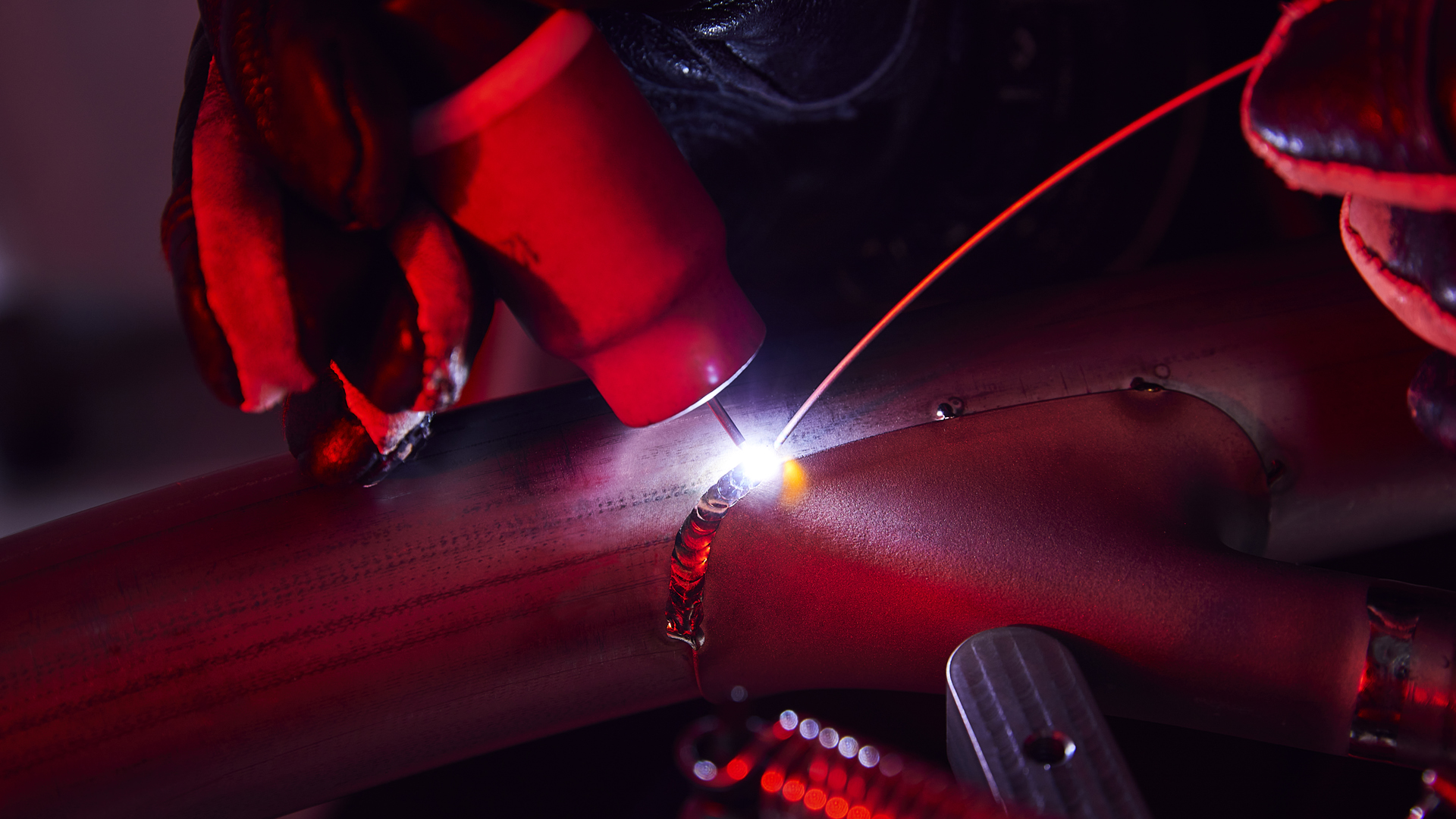
Forging and welding are done at Brompton's new factory in Sheffield, Steel City
Will you do an electric version of the T Line?
Will Carleysmith: We're interested in portability and freedom and we're very interested in electric systems. I think it would be a phenomenal product and certainly an interesting thing to look at. We've learned a hell of a lot over the last couple of years, three years, and as an organisation we are becoming increasingly sophisticated in the engineering tools we use.
Al the R&D is worthless if you can't turn it into mass-produced product. So there's a whole new factory for this one, in Sheffield. They really understood these exotic materials and we've got about 12 people up there now: titanium welders, just producing stunning frame parts, which come down to London where all the assembly happens.
Have you ever looked at changing the core folding mechanism of the Brompton? It's barely changed since day one in terms of the design fundamentals.
Will Carleysmith: As you'd imagine, we have a whole bunch of, you know, curious, technically interested engineers… But the honest answer is, Andrew (Richie, Brompton inventor) got it really right first time. Andrew had to do a huge amount of heavy lifting in terms of product building and the actual fundamentals and silhouette DNA are quite hard to improve on I would say.
The wheel size, for instance is in a sweet spot. If you go smaller than that, it starts to not be a great bicycle, if you go bigger, you start to have problems keeping the folded bike compact. Andrew's design does a phenomenal job of kind of wrapping that wheel size, into sensible size, a good height in the saddle. He did such a great job of thinking about the ergonomics of the fold, as well as just the folding.
So there are probably fractional wins to be had by changing the design, but they are fractional. It's a classic for a reason, and it's not like no one has tried to beat it. There's a new folding bike company coming along every fortnight, with a different approach. Are they better than Andrew's design? Probably not.
So yeah, it's not something we don't think about. But do we think we're going to produce something radically better? No. I would say what's more exciting for us is to take that silhouette and get the lightest, best performing system we can, into the lowest possible weight of the bike.
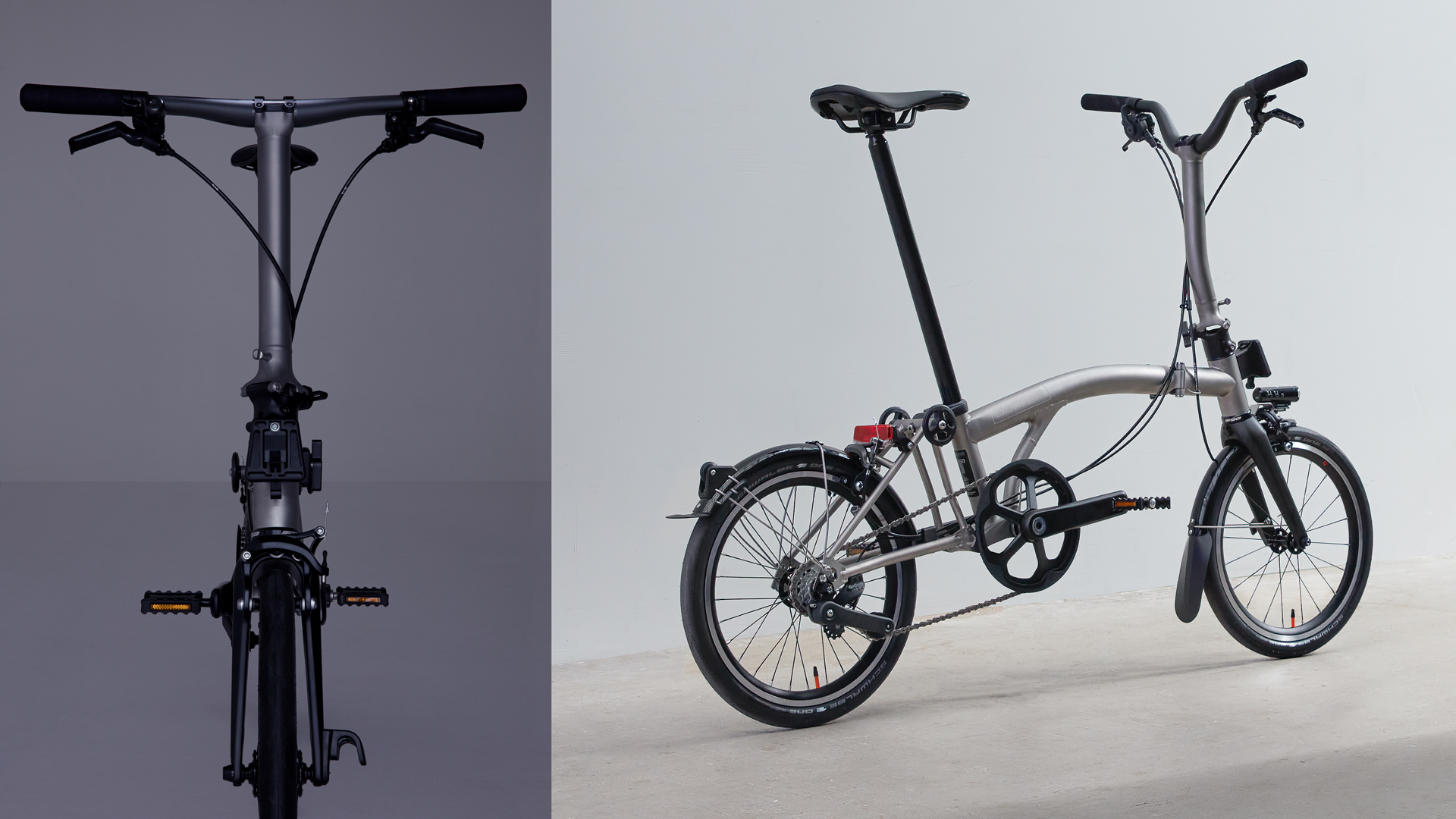
I was slightly smirking when you were talking about wheel size as I once came off the curb on a Brompton Electric and the front wheel came down into a storm drain and was destroyed. I don't imagine many people have done but it did give me pause for thought.
Will Carleysmith: I would probably argue that any bike with the same width of tyre, you might have had the same problem.
Have you seen the Tuck folding bike, where the wheels fold as well?
Will Carleysmith: Yeah, I mean, folding wheels are sort of a sort of perennial thing people come up with. But I think spoked wheels are such a phenomenally light, efficient thing. There are a few things in the bike industry – double diamond frames, in 100 years, has anybody come up with a more efficient structure than the Double Diamond frame? And has anybody ever come up with a more efficient solution than the spoked wheel? Not so much. I think of us as having a kind of Goldilocks wheel size.
I think the complexity that comes with folding bike wheels and the weight that comes with it, and all that challenge, it doesn't really work in a city bike. Wouldn't you be better off putting all of that weight and complexity and cost into other parts of the bike? I would argue that's a more fruitful direction.
On the Tuck, the wheel seems to sort of telescope into itself. I can't even imagine how that works in real life. Anyway, I'm not giving you design tips here.
Will Carleysmith: Duncan teaching the design team, there.

The derailleur on the geared version of the T Line weighs just 60g
So now you've made the lightest ever Brompton, where do you where do you see it going next?
Will Carleysmith: The range has recently been simplified in terms of the naming structure. The point is to have more choice in the range – maybe less fine detail options but more choice. So we go from entry level where you still get that handmade, London frame; you still get that bulletproof, awesome product, but at a price point that's as accessible as possible. Then you've got the T Line that's just an amazing thing.
In terms of innovation, I'm going to give you some fairly vague answers. E systems and electric are a massive, massive trend, and we are becoming a very different business in terms of technology and software and investment in our ability to do that kind of work.
We're primarily interested in how you move around the city. That's what Andrew set out to do. He didn't really give a toss about bikes. What he wanted was the most elegant, joyful way of moving around London. We're really interested in any personal urban transport for cities. We think there's plenty of scope in the Brompton DNA as it is now to do more.
Is an electric scooter something Brompton would ever consider?
Will Carleysmith: What we wouldn't want to do is just do a me-too product. Most scooters are the same and we haven't got much interest in doing just another one. Anything we do, we would look for functionality to be more useful, more functional, nicer to use and solve a problem in a more imaginative way. The scooter market is saturated by broadly quite similar designs.
If you looked at scooters yourself, what do you see as being an obvious thing that's wrong with them, aside from being not technically legal?
Will Carleysmith: I think we would say we would sort of see an ecosystem approach in a market like Germany, where they are legal. I think the scooter manufacturers often would say the same thing. They're good for very short journeys, one or two miles, you know, sort of replacing walking with scooters can make a lot of sense. I think when you're slightly further away, the bike starts to take over.
We've had discussions with lots of people in the industry and that's kind of how we would probably view it.
So do you mean that you would only look at one to two mile type products or a scooter that is suitable for longer journeys?
I would say we're only really interested in anything where we can add value through design or technology, or add a point of difference for it to be worthwhile for us. I mean, I'm romantic about the experience of riding a bike. I would say it's more engaging, and adds an element of exercise. It's a beautiful thing to have a bike as part of your daily routine – it's exercise for free. If you look at the studies, the need for us to get regular, low intensity exercise into our lives, it's massive. More than diet, you know, when it comes to mental health, physical health, if you put an amount of low intensity exercise into your life it's a brilliant thing. Bromptons particularly allow you to do that. Does scooting around on a scooter give you that? I would say not but of course it depends on what you want. But if you want to incorporate exercise, and all the good stuff that comes with that, then I would come back to the bicycle.
Also, if you get a non electric scooter, there is the risk that you end up with one big leg.
Will Carleysmith: Exactly. I've got two young kids and genuinely, people are saying you should encourage your kids to push in both legs. Anyway…
Yeah, I'd always favour my right leg and I’d just end up with one massive leg. So I think that concludes the interview.
Brompton T Line: price and availability
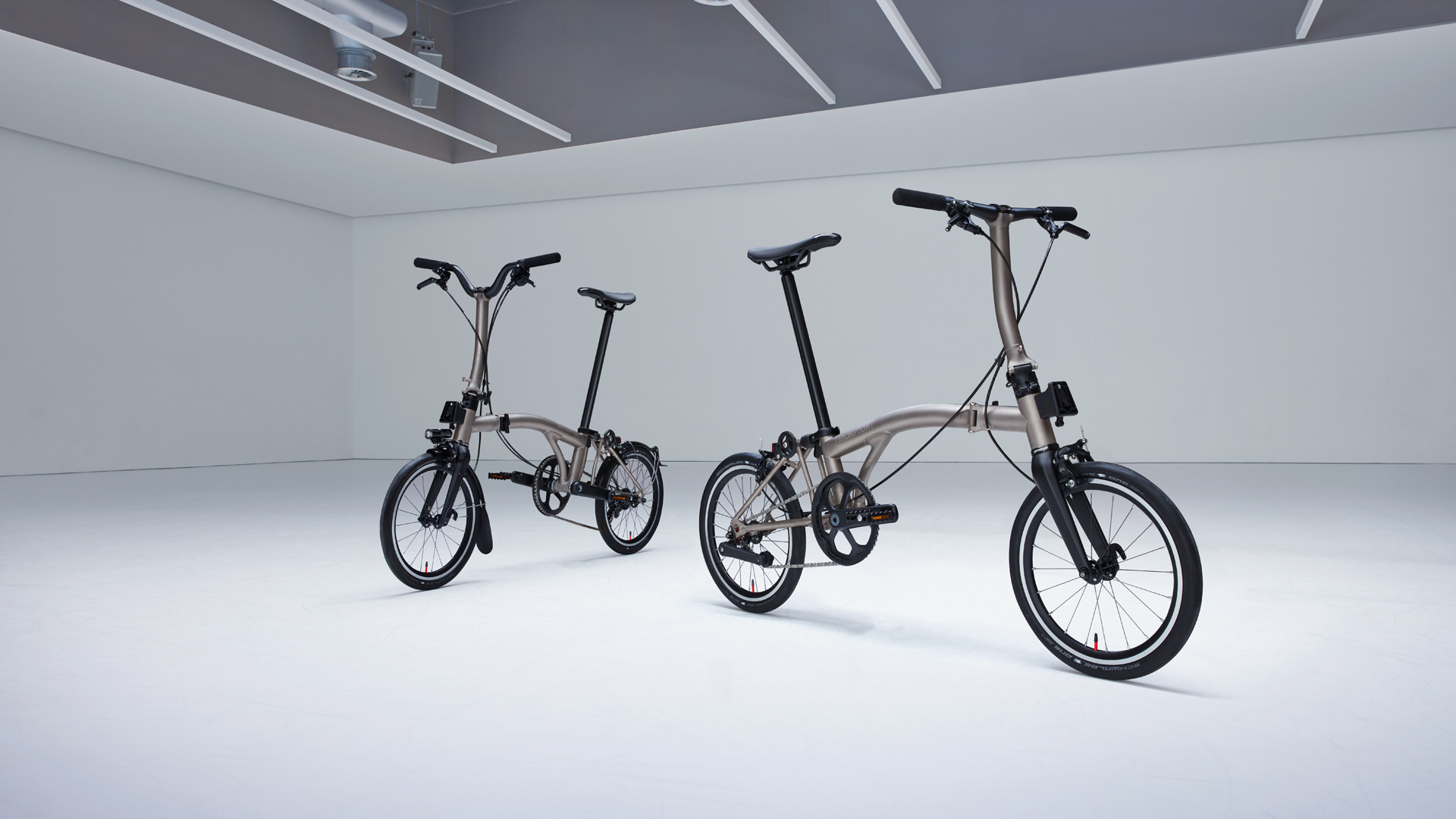
T Line One front/right, T Line Urban rear/left
There are several more affordable Brompton models these days… but the Brompton T Line is not one of them, alas. Nor will it be straightforward to buy, at least at launch.
• T Line One (single speed, no mudguards, 7.45kg) £3,750, $4,795, €4,360, AU$7,100
• T Line Urban (4-speed gears, mudguards, 7.95kg) £3,950, $4,995, €4,590, AU$7,500
The bike is exclusively available via a ballot system on Brompton.com and through selected Brompton Junction stores in London, New York, Shanghai, Singapore and Paris, the bike will be available in two specifications, each with the option of a low and mid-rise handlebar fit.
- Sign up to be notified when T Line is available and view exclusive content
- @bromptonbicycle on Instagram and Facebook
Duncan is the former lifestyle editor of T3 and has been writing about tech for almost 15 years. He has covered everything from smartphones to headphones, TV to AC and air fryers to the movies of James Bond and obscure anime. His current brief is everything to do with the home and kitchen, which is good because he is an excellent cook, if he says so himself. He also covers cycling and ebikes – like over-using italics, this is another passion of his. In his long and varied lifestyle-tech career he is one of the few people to have been a fitness editor despite being unfit and a cars editor for not one but two websites, despite being unable to drive. He also has about 400 vacuum cleaners, and is possibly the UK's leading expert on cordless vacuum cleaners, despite being decidedly messy. A cricket fan for over 30 years, he also recently become T3's cricket editor, writing about how to stream obscure T20 tournaments, and turning out some typically no-nonsense opinions on the world's top teams and players.
Before T3, Duncan was a music and film reviewer, worked for a magazine about gambling that employed a surprisingly large number of convicted criminals, and then a magazine called Bizarre that was essentially like a cross between Reddit and DeviantArt, before the invention of the internet. There was also a lengthy period where he essentially wrote all of T3 magazine every month for about 3 years.
A broadcaster, raconteur and public speaker, Duncan used to be on telly loads, but an unfortunate incident put a stop to that, so he now largely contents himself with telling people, "I used to be on the TV, you know."
-
 This is the sound of BMW's upcoming Neue Klasse EVs
This is the sound of BMW's upcoming Neue Klasse EVsHas BMW cracked the problem of making EVs sound fun with its next-gen soundscape for its Neue Klasse cars
By Alistair Charlton
-
 Build unshakeable core strength with a kettlebell and these three exercises
Build unshakeable core strength with a kettlebell and these three exercisesAdd this to the end of your workout to fire up your midsection muscles
By Bryony Firth-Bernard